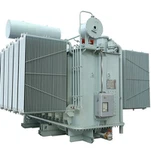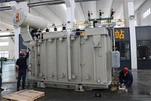If a transformer gets wet, it can lead to serious issues and potentially dangerous situations. Water is a good conductor of electricity, and when it comes into contact with the components of a transformer, it can cause short circuits or electrical faults. Here are some potential consequences of a transformer getting wet:
- Short circuits: Water can create a path for electricity to flow where it shouldn't, leading to short circuits within the transformer. This can cause damage to the transformer and result in power outages.
- Corrosion: Water can cause corrosion of the metal parts inside the transformer, which can degrade its performance over time and shorten its lifespan.
- Insulation breakdown: Water can compromise the insulation of the transformer, increasing the risk of electrical leakage and faults.
- Fire hazard: If water causes a short circuit or damages the transformer's components, it can potentially lead to overheating and even a fire.
In general, transformers are designed to be weatherproof and are often housed in protective enclosures to prevent water ingress. If a transformer does get wet, it is essential to have it inspected by a qualified professional to assess the extent of the damage and to take appropriate measures to repair or replace it if necessary.










